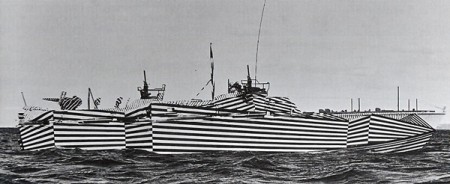ronbo6
Demi-Minion
   Survivor: End of the World. 12/21/2012
Survivor: End of the World. 12/21/2012
Posts: 91
|
Post by ronbo6 on Nov 30, 2012 7:55:35 GMT
Paddy, I can't get the article, and the posted picture is REALLY tiny.. You might have to redo this if the idea was to get a viewable picture.
|
|
|
|
Post by Antigone68104 on Nov 12, 2014 21:39:46 GMT
Getting this thread active again (from the "World War One myths?" thread):
Testing would take a periscope analog, the biggest boat the MBs can borrow or mock up, lots of paint, and something to simulate a WWI torpedo launcher.
... and one more thing -- distance. I haven't been able to find anything on standard attack ranges for WWI U-boats, but U-20 sank the Lusitania from roughly 700 meters/0.4 miles away. Does anyone know how large that quarry lake they've used before is?
Granted, whatever J&A use for their target will be smaller than Lusitania. They might be able to scale down their target, then scale down the distance by the same amount. But I don't know what that's going to do to target visibility -- get too close, and any camouflage will fail.
|
|
|
|
Post by silverdragon on Nov 13, 2014 8:45:46 GMT
 OUCH on the eyes?....  Not just Ships either, "Urban" camo for tanks?...  |
|
|
|
Post by silverdragon on Nov 13, 2014 8:46:59 GMT
 And even buildings...  |
|
|
|
Post by memeengine on Nov 13, 2014 17:48:22 GMT
You might want to read the article by Jonathan Black titled "'A few broad stripes': Perception, deception and the 'Dazzle Ship' phenomenon of the First World War", which was published in "Contested objects : material memories of the Great War" (Routledge, 2009). It covers the concept and development of the idea.
Of particular interest is a paragraph that describes the testing of each unique design (by the British):
"In the initial stages a small wooden model was made of each ship to scale. On this a design was painted in wash colours for the purposes of rapid alteration. This model was then carefully studied on a prepared theatre through a submarine periscope, various sky backgrounds being placed behind her alternately. [This involved an element of role-play with one of the artists taking the part of the U-Boat commander attempting to see through the eyes of the enemy]. A satisfactory design having been evolved giving the maximum distortion, the model was then handed to the trained plan-maker and copied on to a 1/16th-inch scale profile plan of the ship on white paper showing port and starboard side. The plan was then sent to the port officer at the port at which the particular ship was lying and transferred, under his supervision, to the ship"
From the above description it's clear that, initially at least, each design was tailored to the ship on which it was to be deployed. After the initial trials, it was decreed that all merchant ships should be 'dazzled' and subsequent designs were left to the port officers to devise (probably with a less scientific approach).
|
|
|
|
Post by Cybermortis on Nov 14, 2014 0:46:38 GMT
Interesting Memeengine; I've not run across any references to this scheme having been tested at any point. Of course that could mean that the scheme was never tested in the real world but in a lab/office. (Which in context would make sense, as painting an entire ship several times to work out what scheme would work and wouldn't work is probably not practical in the middle of a war.)
|
|